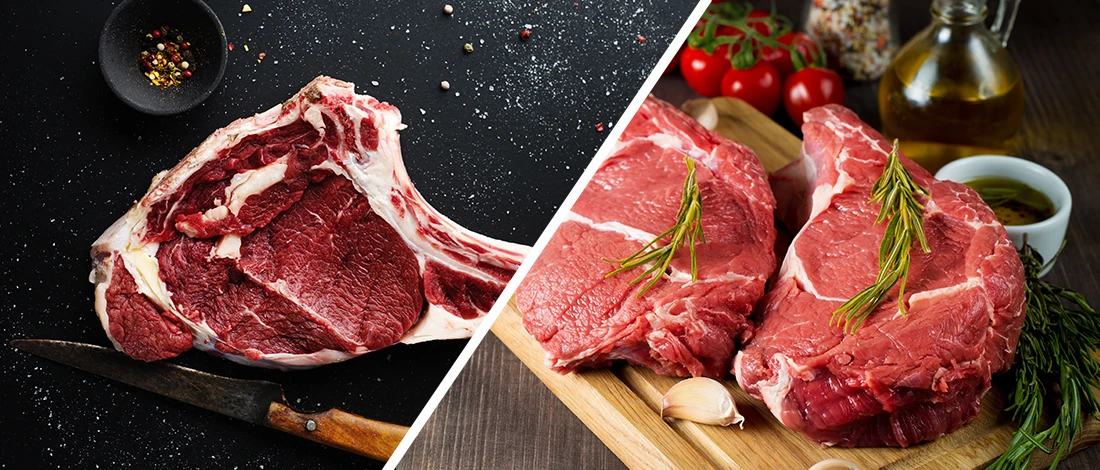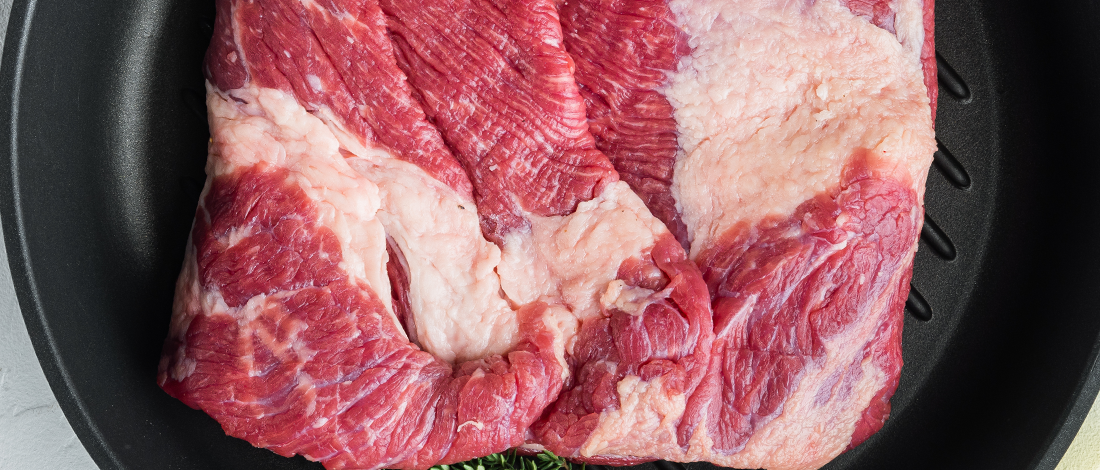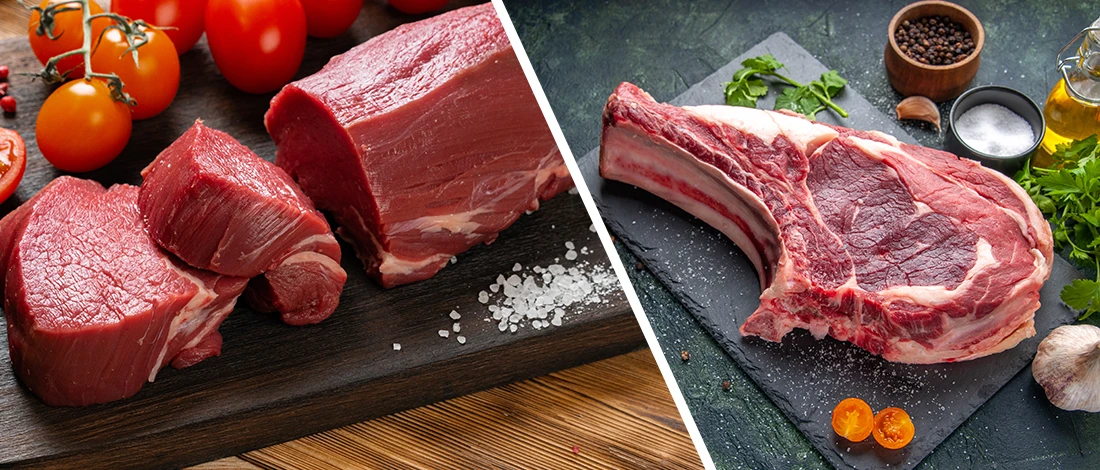Corned beef, pastrami, smoked brisket, and the Jewish Passover main course. What do they all have in common?
Aside from tasting and smelling great (I’m sure I can smell that meat), they are all prepared from the same cut of meat – the brisket.
Have you ever wondered what part of the cow the brisket comes from?
Quick Summary
- Brisket is cut from the cow's lower chest muscles, specifically the deep and superficial pectoral muscles, supporting about 60% of the cow's body weight.
- When shopping for brisket, look for good marbling, consider the cut based on your cooking plan, and remember that the meat will shrink during cooking.
- Brisket can be cooked by smoking or braising, with the key being a "low and slow" approach to break down the collagen and tenderize the meat.
Though the brisket is the toughest part of the cow, you can create the most delicious and tender main meals with it with a bit of patience and the correct cooking methods.
The maxim "low and slow" applies to preparing brisket. If the brisket has been given enough time and TLC, you won't be disappointed with the result.
It applies whether it's for pot roast, chuck roast, filet mignon, and other dishes.
Brisket Is Cut From The Cow’s Lower Chest Muscles
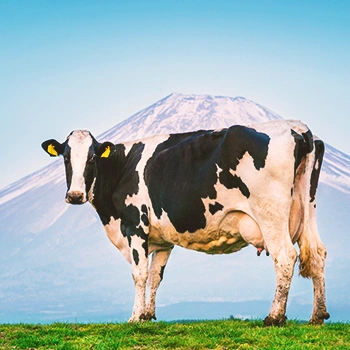
What part of the cow is brisket? Brisket comes from the cow’s chest muscle fibers below the first five ribs [1].
The whole brisket is comprised of the deep and superficial pectoral muscles. Cows don’t have collarbones, so the pectorals support approximately 60% of the cow’s body weight when standing or moving [6].
The extra fat and connective tissue within the brisket muscles are made up of collagen fibers and give them their weight-bearing strength.
A whole brisket, also known as a packer brisket, can be a hefty meat cut with plenty of connective tissues, sometimes weighing 10 to 18 pounds.
The cooked brisket is made up of two overlapping muscles. The first is called the "flat cut" and is the thinner section of packer briskets.
The second section is fattier and thicker, called the “deckle point or the point cut.” [2]
This cut is usually more costly because it is the nicer looking of the two tough cuts and is easier to slice due to its more rectangular shape.
These are all different from skirt steak, flank steak, and strip steak cuts.
The point is tastier but has excess fat compared to the flat beef brisket cut. It has a triangular cut shape and is suitable for shredding.
How To Shop For Brisket

When shopping for brisket to make ground beef and other beef-related meals, you need to consider whether to buy the flat beef brisket, the point, skirt steak, or the entire packer cut, which depends on how you plan to cook it.
Some points to remember when choosing your brisket are:
- Pick a cut with good marbling. This refers to the streaks of fat in between the meat. It is vital for a juicy and tender cut brisket [5].
- Certified Angus Beef or Prime grade beef is the best choice when cooking the brisket due to the high level of marbling.
- The “low and slow” cooking method gives the fat a chance to slowly render out, resulting in a tender and juicy brisket.
- Make sure that you buy the proper cut for your intended dish. You need the brisket flat cut if you want to make pastrami or corned beef. Its shape makes it more suitable for slicing.
- Braised stew dishes and smoked brisket will benefit from the point cut because it is richer and juicier.
- Be careful not to buy corned beef when you're planning to smoke a brisket. They are visually similar, but corned beef has been saturated in salty brine. Although it can be smoked, it will taste similar to pastrami and not barbecue, even with barbecue sauce.
The brisket should have a fat cap even with no cuts or gouges exposing the meat. The fat content should be white or cream [8].
The meat will shrink during the long process, even as ground beef.
Liquid loss and the fat and sinew that is inedible will leave the brisket approximately 25% - 35% smaller once it’s cooked, so consider this when buying your brisket.
When buying brisket for a crowd, you can estimate about half a pound for each person [7].
Adding on an extra pound or two could stand you in good stead if your guests are hungrier than you thought. You can always freeze the leftovers.
How To Cook Brisket

The two most common ways to serve brisket are smoking and braising [3].
Regardless of the method, you need to cook it for several hours until the collagen is broken down to make the meat moist and connective tissue tender.
Here are some hints at cooking a perfect brisket:
- Whether cooking your brisket in an oven, a slow cooker, or an instant pot, take the time to sear the meat first. The slow cook caramelizes it and improves the flavor.
- Brisket always experiences what is known as a plateau or a stall, which is what happens at 160 degrees Fahrenheit. Its internal temperature stabilizes and will not increase. We can equate it to the meat sweating, releasing moisture so that the brisket remains cool while it is cooking. Consider using a meat thermometer before you slice brisket.
- To counteract this, wrap the brisket in butcher paper or aluminum foil. The meat will draw in the smoke for the first few hours, reserving enough liquid for the rest of the cooking time. It also applies after letting the brisket rest.
- Keep an oven-roasted brisket covered throughout the cooking process as the same evaporative cooling principle applies here.
Also Read: Hot and Fast Brisket
How Traditional Jewish Brisket Met Texas Barbecue
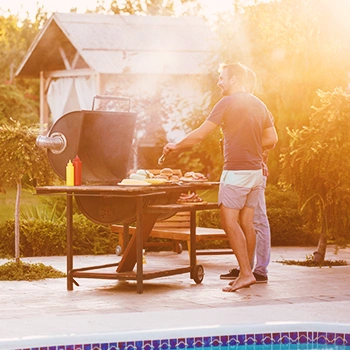
Brisket stands out in the United States as the treasure of Texas BBQ, and it is also a traditional staple for many Jewish families, particularly around Passover time.
The two may be odd companions, but these traditions are intertwined [4]. Jewish families have eaten brisket for centuries, partly because the hindquarters of cattle are not kosher, leaving them fewer cuts to choose from.
When they needed to feed multitudes of people, the brisket was the cheapest option. It's especially great when prepared with a side of potato salad or mashed potatoes.
In the last half of the nineteenth century, many Jews emigrated to the United States and settled in Texas, which was spacious enough for cattle.
Passover brisket was cooked slowly but did not always end up as juicy as desired, and some believe that the settlers learned to smoke meat in the ground from the local native tribes. And that is how the two became one.
Related Articles:
References:
- https://www.allrecipes.com/article/what-is-brisket/
- https://www.bhg.com/recipes/how-to/cooking-basics/how-to-cook-brisket/
- https://www.realsimple.com/food-recipes/cooking-tips-techniques/what-is-brisket
- https://www.foodandwine.com/meat-poultry/beef/brief-history-brisket
- https://www.mashed.com/205584/mistakes-everyone-makes-when-cooking-brisket/
- https://beef2live.com/story-brisket-137-111837
- https://www.thespruceeats.com/what-is-beef-brisket-p2-1805836
- https://www.weber.com/US/en/blog/burning-questions/brisket-101/weber-30485.html


